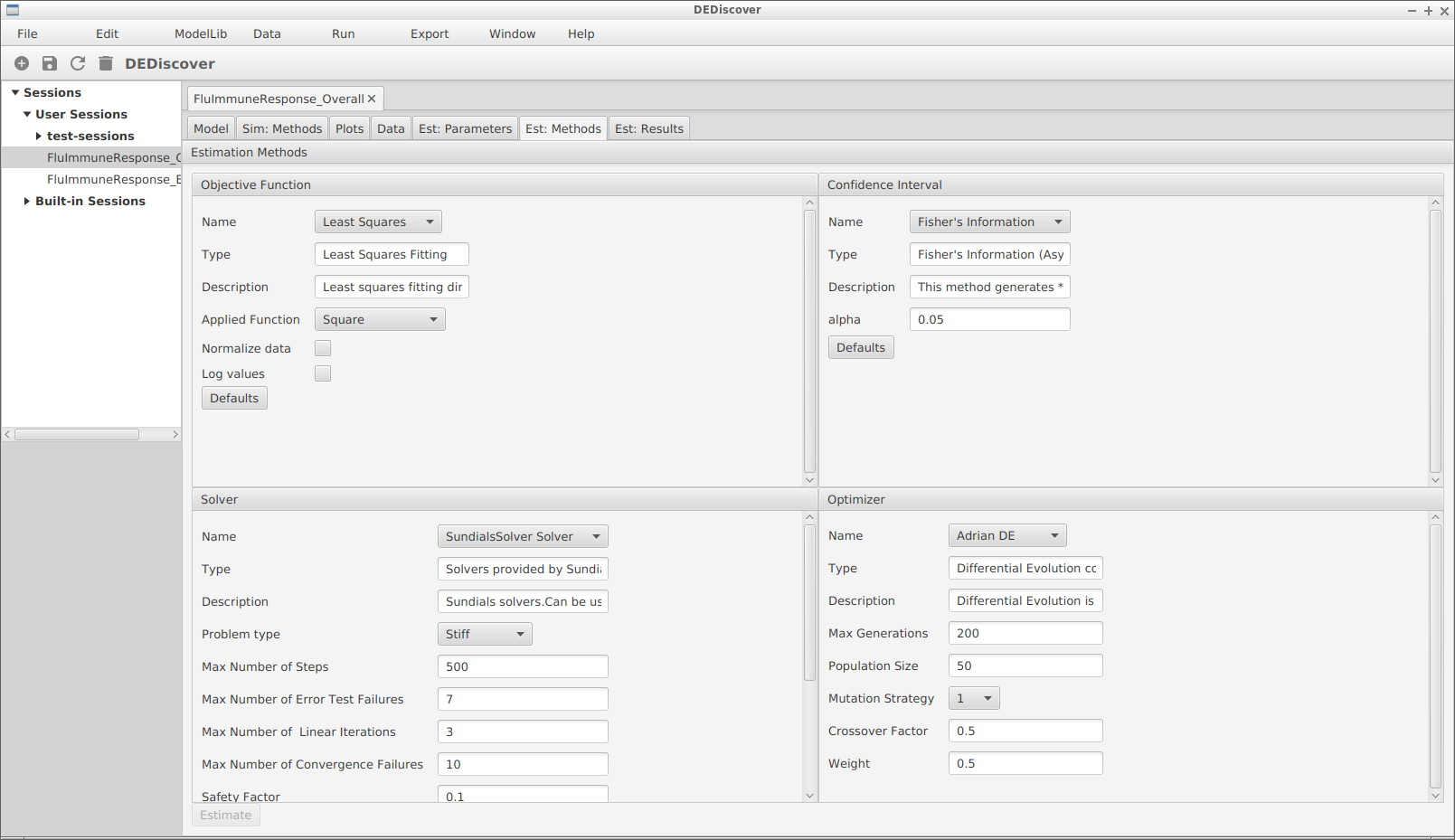Estimation Methods Tab¶
In the Est:Methods tab a user configures all the algorithms involved in fitting the parameters. There are 4 of them as illustrated below. In the current implementation there is only one option for the method in 3 of the cases, although more may be added later. In all 4 algorithms a user may adjust some control parameters.

Estimations Methods Tab
Objective Function¶
In the top left corner is the Objective Function which compares the results of one simulation performed by the optimizer with the data table mapping as defined in the data tab. There are options to normalize the data for each column, and use the log of the values. If both options are selected, the log of the values is selected first, then the columns are normalized. All the data values must be strictly positive if the log option is checked, as the log of 0 or of a negative value is undefined. In addition a user can select to use the absolute value of the difference between the observed and the computed data instead of the square of the difference when computing the objective function.
Solver¶
In the bottom left corner is the solver that will be used by the optimizer to generate the values that will be compared with the datatable at each iteration. Adjusting the control parameter values in this tab will have no effect on the parameter values that are assigned in the Sim:Methods tab.
Confidence Interval¶
In the top right corner is the confidence interval method which computes p-values, t-statistics and some other measures using the Fisher information matrix. This is currently the only available method and it is crude.
Options for the Optimizer¶
In the bottom right corner the user configures the Optimizer. There are 2 optimization methods available:
Adrian DE, an implementation of the Differential Evolution method, which was developed by Rainer Storn, and described in
R. Storn, “Differential evolution - a simple and efficient heuristic for global optimization over continuous spaces,” J. Global Optim. 11(4), 341-359 (Dec. 1997).
DEDiscover uses the implementation by Adrian Michel available on github
Trust Region, an implementation of the interior-point method of Coleman and Li, described in:
T.F. Coleman and Y. Li, An interior trust region approach for nonlinear minimization subject to bounds”, SIAM J. Opt. 6(1996) 418-445.
This method is likely to be of not much use for most problems.